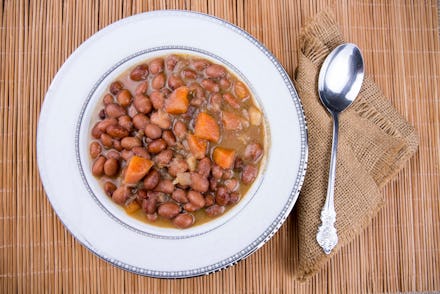The real cost of food: The same bowl of bean stew costs $1.20 in New York — but $321 in South Sudan

How much of your income would you estimate you dedicate to food? A report from the World Food Programme published in late 2017 reveals that the cost of basic nutrition is enormously disparate across the world.
A New Yorker, for example, would spend just 0.6% of their daily income — about $1.20 — to buy ingredients to prepare something like a basic bean stew. A person in South Sudan, where there is the greatest food disparity out of the countries in the study, would need to spend 155% of their daily income — or the equivalent of $321 — to afford the same ingredients.
To calculate the cost of a similar meal for every location, WFP researchers determined the percentage of a person’s daily income spent on food, then readjusted the currency to U.S. dollars, comparing every calculation to a New York State resident’s as the baseline. The cost of the ingredients for a single serving was calculated in local currency, and in most cases, daily income was determined with national GDP per capita figures.
According to WFP, 795 million people were hungry in 2016, and that number is only expected to rise. “If people go hungry, it is often because food is unaffordable: our world is riddled with disparities in the cost of basic nourishment,” the report reads.
As the graph below indicates, in some parts of the world, a simple meal can cost a full day’s work — and in some cases, like in Syria, Nigeria and South Sudan, the price can far exceed a person’s daily income.
This massive food inequality has evolved from a number of causes, and it plagues different countries for reasons from geography to terrorism. In Nigeria’s hunger crisis, where WFP estimates the cost of one meal to be $200.32, or 121% of a person’s daily income, years of violence perpetuated by Boko Haram has led to a disruption in education, major displacement and decreased agricultural production, meaning there is much less food to eat. By some estimates, parts of the country are experiencing famine, a condition that, when meeting the formal humanitarian definition, is rarely achieved.
A mountainous and often isolating terrain in Nepal, where the cost of the hypothetical stew is $27.77 (13% of daily income), makes it difficult for the 9% of residents who live in isolated villages. “The only way to get anywhere is to walk,” according to WFP. “Food and other goods are transported on mules, where possible, or on dzos (a yak–cow hybrid) at really high altitudes. But a third of trails are too steep or narrow for animals, and hired porters, carrying bundles often exceeding 30 kg, are often the only way of getting what is needed out to the villages.” When natural disasters occur here, physical routes for food — and thus, livelihood — can be swept away or destroyed, leaving people in even more dire situations.
While every area facing food inequality and scarcity requires a tailored solution, there are several tactics that, with the right resources, could help make food access more achievable. One such way is to restructure food systems and help governments create sustainable meal programs. “Providing schoolchildren with a daily meal, or giving them food to take home, not only boosts their own health, growth and intellectual development, but ultimately powers the economic output of entire nations as the children turn into working adults,” according to the WFP report. In other words, the success of a country, and its people, depend on food.